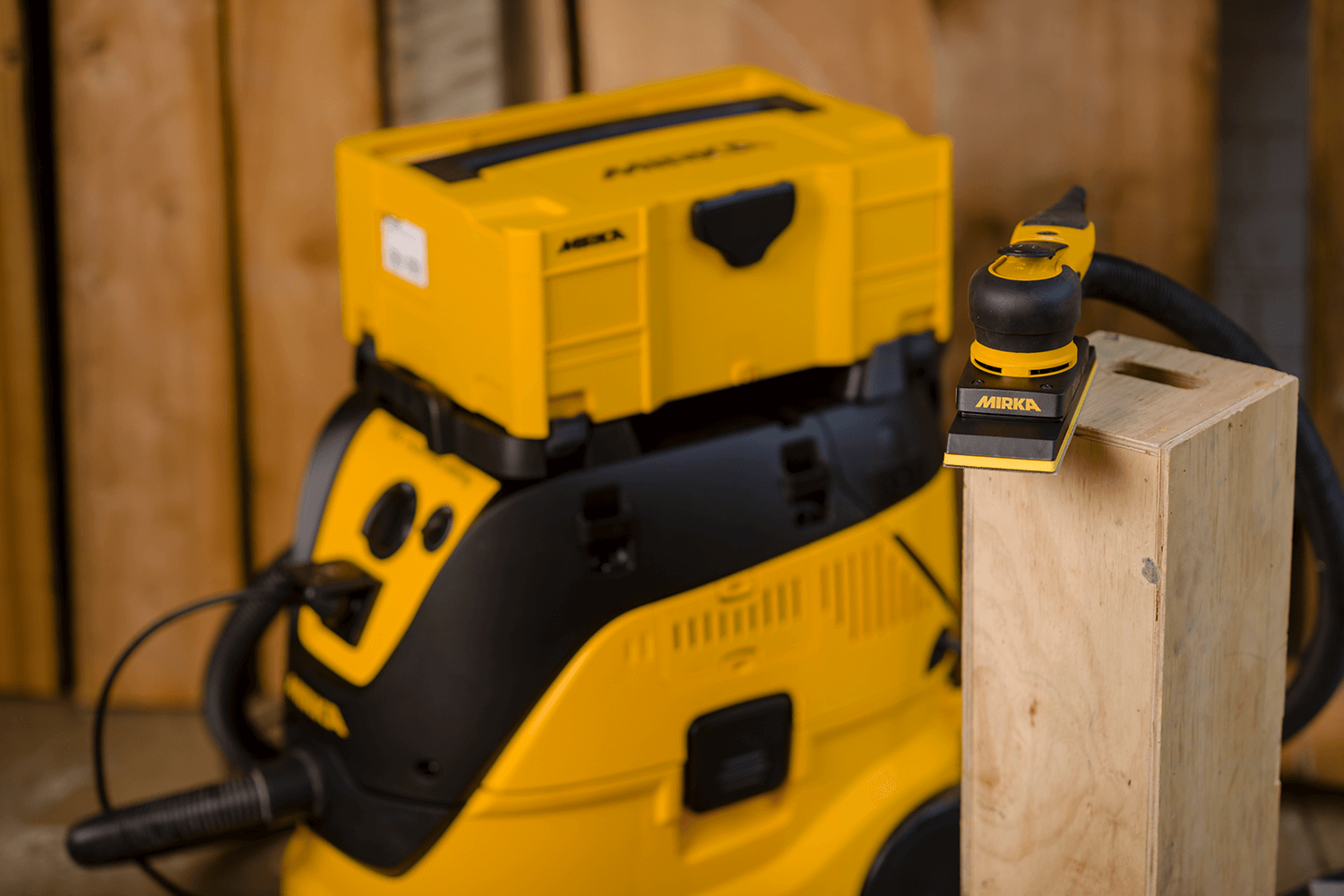When it comes to abrasives, choosing the right one for your specific needs can significantly impact the quality and efficiency of your work. In this blog, we'll delve into the distinctions between three popular abrasives from the Mirka Abranet family: Abranet, Abranet Ace, and Abranet Ace HD. Each of these abrasives is designed to cater to different applications, substrates, and durability requirements.
The grain of the abrasive is one of the most critical components in determining the performance and suitability of an abrasive for specific tasks. Here's a breakdown of its significance:
Cutting Ability
Sharpness: The type and sharpness of the abrasive grain determine how effectively it can cut into the material being sanded. Harder, sharper grains like ceramic provide a more aggressive cut, making them ideal for tougher materials.
Material Removal: Coarser grains remove material faster but leave a rougher finish, whereas finer grains provide a smoother finish with slower material removal.
Durability
Wear Resistance: Different grains have varying levels of durability. For example, ceramic grains are known for their high durability and can last longer under heavy use, reducing the frequency of changing abrasives.
Breakdown Rate: Some grains, like aluminum oxide, break down in a way that continually exposes fresh, sharp edges, maintaining cutting efficiency over time.
Heat Resistance
Heat Generation: Abrasive grains that resist heat build-up, such as ceramic, help prevent damage to both the workpiece and the abrasive itself. This is crucial for preventing burns or discoloration, especially on heat-sensitive materials.Surface Finish
Scratch Pattern: The type and size of the grain determine the scratch pattern left on the workpiece. Consistent, controlled scratch patterns are essential for achieving the desired finish, particularly in finishing applications.
Smoothness: Finer grains produce smoother finishes, which is important for final surface preparation before painting, staining, or sealing.

Application Suitability
Material Compatibility: Certain grains are better suited for specific materials. For instance, ceramic grains are excellent for hard, tough materials like metals and hardwoods, while aluminum oxide is versatile for wood, metal, and composites.
Task Appropriateness: The choice of grain affects whether the abrasive is suitable for tasks like heavy stock removal, finishing, or polishing.

Cost-Effectiveness
Longevity: More durable grains like ceramic can be more cost-effective in the long run despite their higher initial cost, as they require less frequent replacement.
Performance vs. Cost: The balance between the performance benefits of a high-quality grain and its cost can impact the overall efficiency and cost-effectiveness of a project.
 |
 |
 |
|
| Specification | Abranet | Abranet Ace | Abranet Ace HD |
| Abrasive Grain | Aluminium Oxide | Ceramic | Ceramic |
| Backing Material | Polyamide mesh | Polyamide mesh | Woven mesh |
| Application | General surface sanding | Challenging surface conditioning and repair | Heavy-duty applications |
| Substrates | Wood, composites, primers + many more | Cement, carbon fibre, composites, metal, two-part adhesives and finishes, and very hard timber + many more | Various woods, composites, old paint, lacquer |
| Dust Extraction | Excellent due to mesh construction | Excellent due to mesh construction | Excellent due to mesh construction |
| Durability | Standard | High | Very high, designed for heavy-duty use |
| In a nutshell | Abranet is the original net abrasive. It is designed for general sanding applications, offering excellent dust extraction due to its mesh backing. | Abranet Ace is optimized for tougher sanding applications and challenging surfaces. | With twice as much cutting grain, HD is excellent for heavy stock removal, sanding various wood types, and stripping old paint and lacquer. |

Abranet SIC NS and Abranet Max are also within the Abranet family, for more specialised uses. Abranet SIC NS (mainly used for glass) is used for sanding and polishing solid surfaces like glass, stone, primers, lacquers, composite materials, offering sharp silicon carbide grains and a no-stearate coating for efficient, clog-resistant performance.

Abranet Max mostly comes in belt form and mainly used by woodworkers. Abranet Max is used for sanding applications that require maximum efficiency and durability, particularly on wood, composites, and metal surfaces, where its open mesh construction provides excellent dust extraction and prevents clogging, making it ideal for both coarse and fine sanding tasks.









